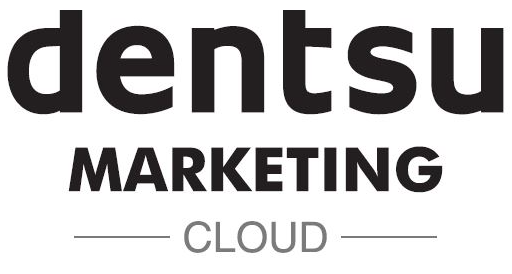
Starting from the last week of April 2021, Apple has officially released the new iOS 14.5 in a phased manner. With it comes Apple’s App Tracking Transparency (ATT) framework, which will compel iOS app developers to prompt users to opt-in to tracking and to access their IDFA (Identifier for Advertisers). This brings about a drastic shift in how we advertise on not only iOS devices but moving forward also on other mobile devices.
As app developers and advertisers in the iOS ecosystem continue to work out this new change, we would like to share the impact on Dentsu Marketing Cloud (DMC), the measures we are taking for our users and the steps that you should consider.
Treat iOS 14.5+ campaigns differently
We recommend users to reevaluate their mobile advertising strategies and create separate campaigns for iOS 14.5+. An immediate step that you should consider is duplicating your existing campaigns and edit them to target only iOS so that you can isolate and track conversions separately. The precision of user data will be heavily impacted in iOS due to ATT opt-outs and limitations.
Further, due to restrictions on SKAdNetwork – each app advertised on Facebook is limited to only 9 active iOS 14 campaigns and each campaign is limited to five ad sets of the same optimization type.
We will soon be coming up with a migration hub, which will allow you to seamlessly transition your campaigns and structure your ad account according to DMC best practices.
Impact of Aggregated Event Measurement on your campaigns
With the iOS 14.5 rolls out to users, Facebook has implemented the Aggregated Event Measurement (AEM) protocol. Taking a step beyond Apple’s Private Click Measurement (PCM) standard, AEM will limit the transition of sensitive data and aggregate conversions in reporting. In an effort to standardize the workflow, Facebook will be enabling AEM for all campaigns moving forward-including those targeting Android or desktop. Note, this is being pushed in a phased manner with 100% rollout expected in the next 60-90 days.
With AEM, Facebook will optimize for a maximum of eight conversion events for each domain. These are initially configured by Facebook, but you can later manage your preferences in Facebook’s Events Manager. Please note, updating the events will cause your ad sets to be paused for up to 72 hours. These ad sets will have to be manually restarted after the cycle of 72 hours is complete.
To solve for this, we are working tirelessly to provide a robust solution that enables you to link & optimize towards your conversions (goals) in Google Analytics via your Facebook ad campaign. This feature will unify the client’s own conversion data with actual campaign statistics, helping improve overall campaign effectiveness. We are currently beta testing this on a few of our clients and should be rolled out to all users soon.
Audience breakdown in Campaign Manager
The numbers you see in Campaign Manager derived from our machine learning algorithms layered on top of data that is pulled directly from Facebook via their Marketing API. The restrictions that Facebook faces with the ATT framework in terms of attributions and categorization will trickle down to DMC’s campaign manager. With release of iOS 14.5, Facebook will be activating its Aggregated Event Measurement system, which will cluster successful conversions and limit certain user information. This will further impact the audience breakdowns for any campaigns targeting offsite conversions. For example, FB campaigns optimizing for app or web conversion events will not support breakdowns such as age, gender, region, and placement.
We understand the importance of having granular insights of your audience and to this effect, we are developing solutions to overcome these constraints laid by the changes made by Apple and Facebook. We will soon be adding a feature that will allow you to use your Google analytics datasets and learnings to provide better intelligence to your ad campaigns.
Our team is currently working on building various solutions to support iOS 14.5, improve on Facebook’s AEM and help users with this transition. We will keep you updated with our developments. While these new solutions are rolled to all users, here are a few tips to ensure continuous success of your DMC campaigns –
• Target the Client’s performing audience from the get-go
Upload a custom audience of your client’s purchasers/consumers/top performing audience onto Facebook and create a 1% lookalike from this database. Using Explore on DMC, we can now analyze the newly created lookalike, thereby getting a better understanding of the unique interest cohorts and consumption patterns of your client’s best performing audience. Best part, from DMC itself you can quickly activate campaigns on Facebook and programmatic from these new & rich insights.
• Regularly use DMC’s Campaign Budget Optimizer
We have seen tremendous results from our Budget Optimizer, providing an avg. 20% improvement on ROAS as compared to Facebook’s own CBO engine. For immediate impact, we recommend activating the Budget optimizer early i.e., on the 4th day of the campaign itself.
• Optimize at a Psychographic level
For active campaigns, DMC provides you with interest level performance in the targeting layer of the Campaign Manager. From this Psychographics tab, you can block the non-performing interests and at the same time get recommendations from the best performing ones.
You can read more about the effects of Apple’s ATT framework on your Facebook campaigns in Facebook’s Business Help Centre.


![Read more about the article DMC Explore [Topic Lens]- The content team edition](/wp-content/uploads/2021/01/Blog-Feature-Images-300x300.png)